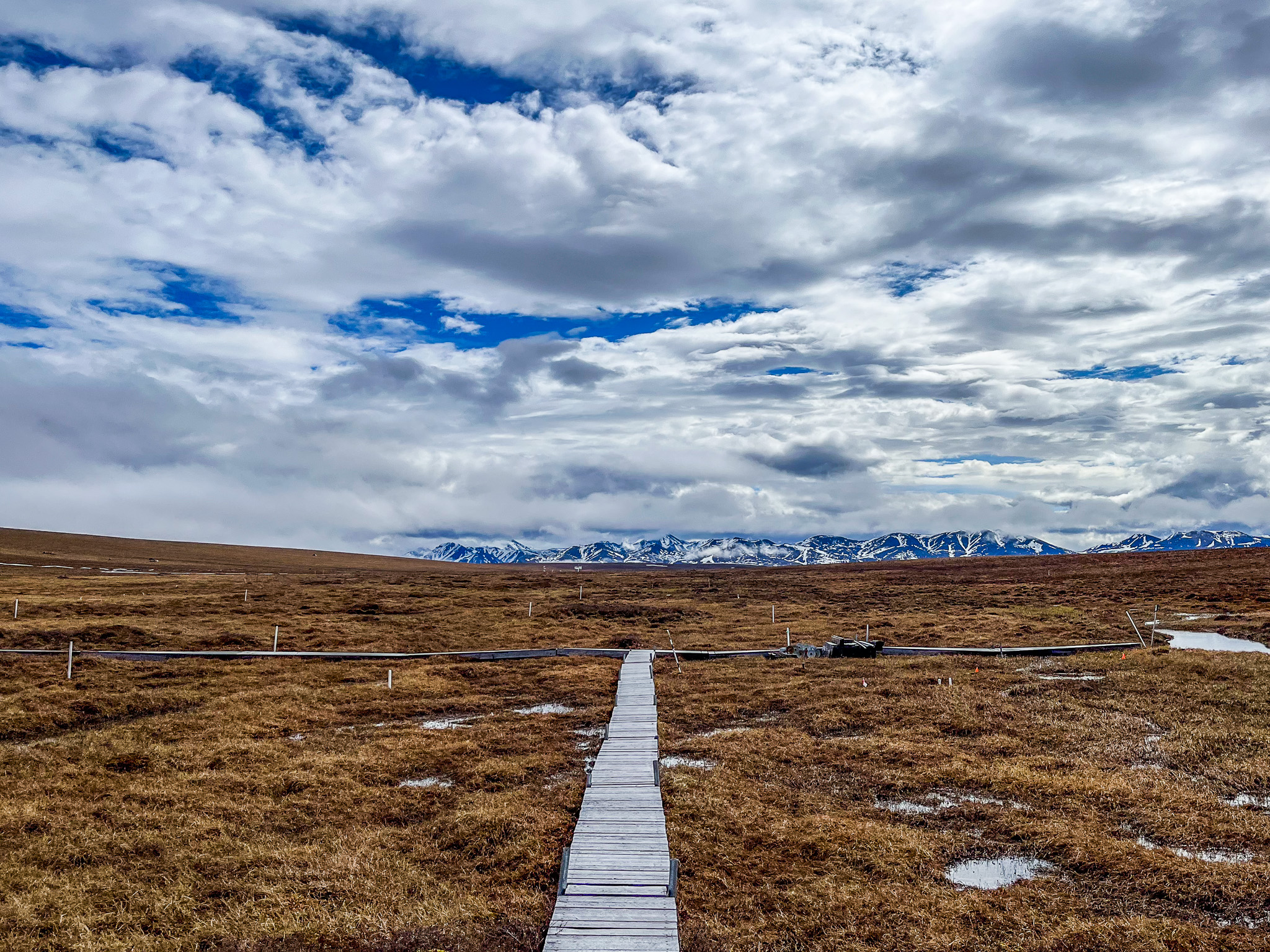Cold Region Hydro-biogeochemical Processes
Dynamics of interconnected surface-subsurface flow and reactive transport processes across the hillslope-riparian zone-river corridor continuum of cold, high-latitude watersheds
Summary

The Arctic is warming almost four times faster than the rest of the world, in the process thawing large stores of permafrost soil carbon. The thawing amplifies climate change if the carbon is released to the atmosphere as greenhouse gases like carbon dioxide and methane. The conversion of soil carbon to greenhouse gases occurs in watersheds, and is largely controlled by how water flows through the soils from the hillslopes to valley-bottoms and into streams. The hydrologic processes within watersheds are shifting in response to dramatic changes in extreme weather events like heat waves, flooding and storms, and more frequent tundra wildfires, along with a shorter cold season and longer summer thaw season. However, scientists do not know how the concurrent thawing of permafrost soils and changes in watershed hydrology will affect greenhouse gas emissions. There is a clear need to improve models of cold-region watershed hydrology in order to predict how warming and permafrost thaw now will affect greenhouse gas releases in the future. This research will use state-of-the-art mathematical models of watershed hydrology, and advance them to provide the first integration of highly-dynamic water flow over the landscape, through soils, and to rivers with key biological and chemical processes that control greenhouse gas generation and transport. Realistic coupling of the hydrology, biology, and chemistry in these models will be validated by key measurements in the field. Based on current understanding, our expectations are that (1) hydrological flow patterns from hillslopes through valley bottoms control the landscape export of carbon from soils to rivers and the relative production of greenhouse gases (carbon dioxide versus methane); (2) variability in extreme events, freeze-thaw cycles, and day-to-day weather will alter the magnitudes of biological and chemical reactions through the hillslope to valley-bottom and then to the river; and, (3) watershed-scale carbon exports are controlled by valley-bottom processes, but hillslope and stream processes can dominate as climate change alters weather patterns and hydrology. We will test these ideas under scenarios of shifting cold- and warm-season climate, by adding novel physics and chemistry to two coupled DOE models, the Arctic Terrestrial Simulator (ATS) and a chemical reactions and transport model (PFLOTRAN).
Funding Agency:
Department of Energy, Biological and Environmental Research (BER), Environmental System Science Program (ESS)
Team:
M. Bayani Cardenas, University of Texas at Austin (Principal Investigator)
Bethany T. Neilson, Utah State University (Co-Investigator)
Pin Shuai, (Co-Investigator)
Rose M. Cory, University of Michigan (Co-Investigator)
George W. Kling, University of Michigan (Co-Investigator)
Ethan T. Coon, Oak Ridge National Laboratory (Co-Investigator)
Neelarun Mukherjee, University of Texas at Austin (PhD Student)
Devon Hill, Utah State University (PhD Student)
Duration:
2023-2026
Total funding:
$1M
Updates
07/01/2024: Our team completed our first field compaign in the study site near Toolik Field Station in Alaska this summer. We collected soil and water samples and surveyed the groundwater table and thaw depth in the piezometers.